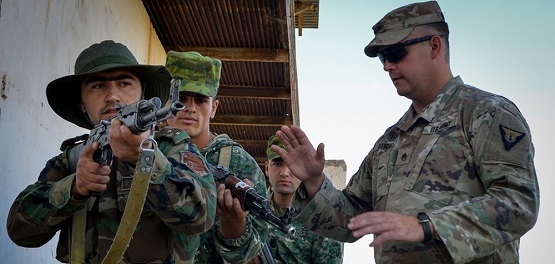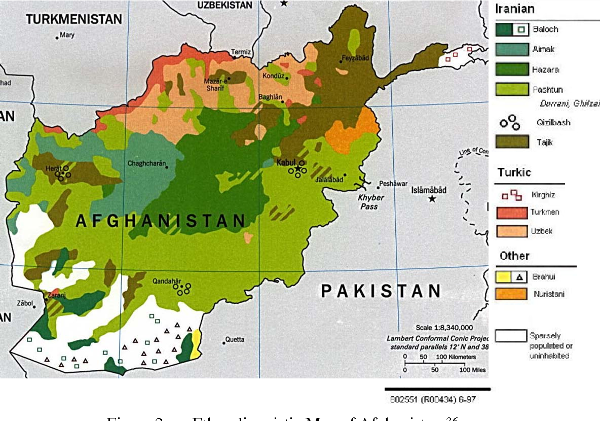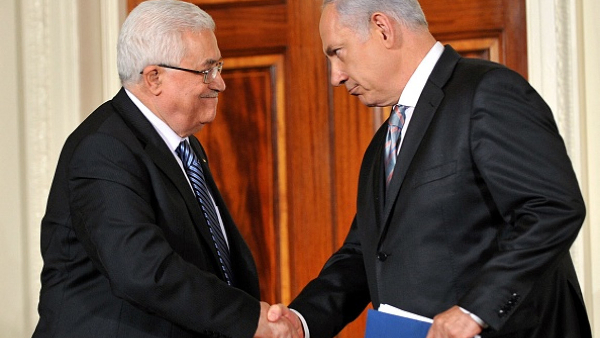The American and Tajik forces concluded security exercises on July 23 that gathered together the two countries' security forces in Fakhrabad, southern Tajikistan.
Kyrgyzstan, Mongolia, and Pakistan sent security forces for the two-week drills that started on July 10.
Tajik security forces were commanding the drills. The exercise is a simulated peacekeeping operation in response to a hypothetical UN mandate, a statement released by the US Central Command (CENTCOM) said a week before the maneuvers started.
The joint drills signal a growing American role in the Central Asia region, where all countries are former republics of the Soviet Union.
Before the 9/11 attacks the US agenda in Central Asia focused on democracy and human rights in the region and military cooperation of Washington with the region's countries did not transcend the NATO's Partnership for Peace program. However, when the al-Qaeda allegedly struck the US in 2001, the American leaders headed to Central Asia mainly with a green light given by Moscow.
At first hand, Tajikistan attracted Washington's attention at the time as it shared 1,400 kilometers of borders with Afghanistan, where the US deployed forces to fight al-Qaeda. Tajikistan offered the US-led NATO operation air bridges and in return the US removed the country's name from the list of countries suspected of links to drugs and weapons trafficking. Since then Washington got Dushanbe on board the annual Regional Cooperation command-post exercises to help Tajik security forces gain further experiences to deal with security situations.
The US providesTajikistan with security and civilian aid packages. In 2008, it gave the Tajik customs 6.7 million worth of screening facilities as part of its Export Control and Related Border Security program. The 2009 saw a new American-Tajik deal that increased the US supply of drugs smuggling control equipment. The US ambassador to Tajikistan Elisabeth Millard said that the American security aids to Dushanbe went beyond $262 million from 2008 to date. The aids largely focus on guarding the borders against foreign threats and a program that trained the country's security forces to deal with risks.
Commenting on the two countries' partnership, Millard noted that they worked toward joint goals that contribute to security and stability in the region. The ambassador praised the joint exercises as providing better ways to campaign for peace and secure the borders. She further maintained that this year's security drills were of significance as they take place while the two countries celebrated the 25th anniversary of beginning diplomatic relations.
Nooruddin Satarov, an official in the Tajik defense ministry, praised the maneuvers as solidifying Washington-Dushanbe friendship.
We learn from each other. Armed with this experience, our armed forces can launch operations even beyond our national borders, Satarov further said.
But the growing US influence in the Central Asia does not go without costs for Russia, whose backyard covers the whole region. Russia discussed plans to invest $2.5 billion on Ragun dam and hydropower plant as well as development of the Tajik aluminum industry in return for long-term military presence agreement on Tajikistan soil. However, Moscow later abandoned the investment plans, motivating the Tajik elites to head to West and the US for military, economic, and political partnership.
These drills are held annually despite the Russian concerns about growing American sway in the region. Nevertheless, for the participating countries, this is a justified move as they seek wresting advantages from Moscow.
But Russia so far proved it puts premium on the realm of the former Soviet Union through its policy towards the near abroad that includes the Soviet republics in its vicinity. Moscow founded the Collective Security Treaty Organization (CSTO) that gathers together these republics inside Russia's orbit. Main motivation behind CSTO foundation was a will to contain NATO and US toehold in the neighboring countries. In fact, the Russian leaders aim at keeping their central military and political role by founding new political, military, and economic bodies in Central Asia.
The American creeping into the Central Asia has also raised the hackles of China, another US rival beside Russia. Beijing dealt with the issue through establishing the Shanghai Cooperation Organization (SCO) in 2001 that showed the two allies' zeal to form a multinational body that at the end of the road serves their agenda and interests, including a desire to check US foothold in Central Asia.
But challenges remain ahead. Despite a gradual movement of the SCO towards transformation into an inclusive and coherent body, still sometimes the national interests of the members overshadow the collective interests that causes disunity and even inefficiency. Additionally, some regional countries cast doubt on the promise that SCO can neutralize NATO in Central Asian rivalry of sway. Many analysts agree that the degree of the Russian, American, and Chinese national interests' realization will determine the face of the future Central Asia in terms of peace and stability, not the multinational treaties like the SCO.
LINK: https://www.ansarpress.com/english/7690
TAGS:































 Violation of the sovereignty and rights of afghan citizens by America
Violation of the sovereignty and rights of afghan citizens by America




